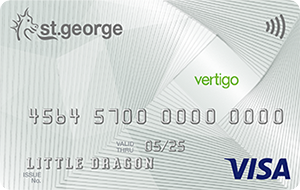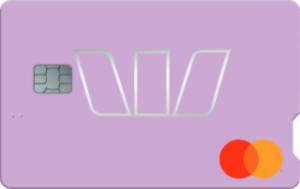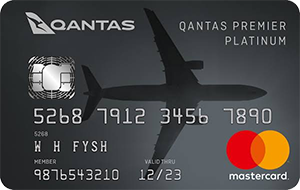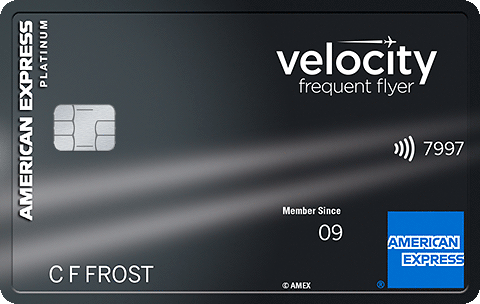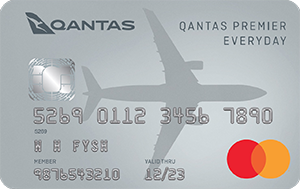
Hi, I’m a personal finance expert who loves to help you out! I’ll answer your question within a business day. Pinky swear.

As a nation, Australia spent $58 billion in the lead-up to Christmas last year, up around 11% on pre-pandemic spending during the same period in 2019.
According to predictions made by the Australian Retailers Association and Roy Morgan, we are projected to hit that $58 billion mark again this year, with $11 billion expected to be spent on Christmas gifts alone.
With millions of Aussies emerging from lockdown, it’s not surprising that so many of us are now planning to make this Christmas special, perhaps spending more than we should to make up for those long months cooped up at home.
But, while there’s nothing wrong with splurging a little over Christmas, it’s not a great idea to get into debt as a result.
Figures released by the Reserve Bank of Australia suggest Australians borrowed $24.3 billion on credit cards over last year’s Christmas period, with around one third carrying that debt into 2021.
So, instead of ushering in the New Year with holiday spirit and Christmas cheer, those cardholders carried with them a debt hangover of $1,748 on average per card.
Using a 0% Purchase Card to Spread the Cost
Being smart with your purchases and spending wisely is a great way to get on top of those Christmas costs. But, what else can you do to spread your festive spending to make it easier to manage?
Used correctly, a card with a 0% purchase offer could offer a solution.
So, how does it work? A 0% purchase card is a credit card with a 0% introductory offer on purchases. Essentially, it allows cardholders to spend on their credit card and not pay any interest on their purchases during the offer’s introductory period.
Depending on the card, that intro period could last anywhere between a few months and a year and a half. So, as long as you choose the right card and are smart about the way you use it, you could cover your Christmas costs and pay them all off, with no interest to worry about.
All the Little Things
Gifts for the kids here, Secret Santa presents there. Drinks with friends, family dinners, festive treats, new decorations. While you might be great at budgeting 11 months of the year, costs always seem to spiral in December – with all those little things adding up to something big.
With a 0% purchase card, you can use the card to cover all your smaller expenses. Obviously, just because you have the card doesn’t mean you need to start overspending, but you can cover the costs you need to make, and then save on interest as you pay them back over time.
Big Ticket Spending
With international travel getting back on track for some states and territories – and some internal borders set to open before Christmas – you may well be booking a trip this festive season. Whether you’re planning a long-awaited reunion with family or friends, or a getaway for much-needed R&R, a 0% purchase card could offer an easy way to spread the costs.
Aside from travel, there may be any number of other big ticket items you want to splurge on this Christmas. A new TV perhaps? Some new furniture for the lounge room? New bikes for all the family? Whatever that large cost is, a 0% purchase card could cover it, giving you the time you need to pay it back, with no interest accruing.

Eligible Purchases FAQs
Q, Can you pay bills or government payments with 0% purchase cards?
While bills aren’t exactly festive, they still keep coming, no matter what time of year. So, can you cover government payments and other bills with a 0% purchase card?
A. It really depends on the card. While some card providers will allow you to use your card to cover those types of payments, others won’t. Check the offer details for eligible transactions, or contact the provider to find out before you apply.
Q. Will the credit card’s annual fee be eligible for the 0% interest rate?
A. When you have a card with a 0% purchase offer, only the purchases you make on the card will attract the offer’s 0% rate. That means any fees you choose to put on the card will typically attract the card’s standard rate.
Q. Can you make 0% interest withdrawals on the card?
A. When you use your credit card to make a withdrawal at the ATM, that is called a cash advance. As this type of transaction is not a purchase, it won’t receive the card’s introductory 0% rate. Instead, it will attract the card’s much higher cash advance rate, with interest charged from the day of the withdrawal.
After the Intro Period Ends
At the end of the intro period, the card will revert to its standard purchase rate. That means any new purchases you make on the card will attract this new rate ongoing. You can, however, continue to pay no interest as long as you pay your closing balance in full by the due date.
What happens if you still have a balance at the end of the intro period? While it will depend on the card, the balance will most likely revert to the card’s standard purchase rate. If this rate is high – as it often is with rewards cards and platinum cards – those interest costs may start to sting.
To avoid paying out in interest – and thus lowering the value of the offer – it’s best to keep tabs on your spending throughout the offer period, and make regular repayments so that the entire balance is paid off when the intro period ends.
How to Choose the Right Offer
Want to make your 0% purchase offer work for you? Compare, compare, compare. Fortunately, CreditCard.com.au makes the comparison process super easy, so you can easily find the right card – and the right offer for you.
So, what should you look for?
- Offer Period: Intro periods on 0% purchase offers tend to range between 3 and 18 months. Look for an offer that gives you the time you need to not only make the purchases you want, but the time you need to pay them off.
- Credit Limit: When comparing cards, be aware of the maximum credit limit on each option. While the credit limit you are provided will depend on factors such as your income and credit history, if you choose a basic card with a low credit limit, you may not be able to use the card in the way that you want – especially if you’re planning big ticket spending.
- Standard Purchase Rate: If you plan to keep the card after the offer ends – or if you think there’s a chance you may not pay off your spending within the intro period – choose a card with low ongoing purchase rate. This will be important if you tend to carry a balance.
- Annual Fee: Fees affect the affordability of the card – and the value of the offer. If you only need a basic card, opt for a low fee card with basic features. If you want to make use of rewards and features, make sure the higher annual fee is worth paying for the value you receive.
- Other Features: If you need features, be sure to take that into account during your search. If your focus is the offer, you may want to consider putting features to the side.
- Other Offers: While you don’t often see bonus rewards points offered alongside 0% purchase offers, you may find reduced annual fees and balance transfer offers. Again, consider what you want most from the card, and what will offer you the most value.
- Eligibility: You may find higher end cards have better offers. But, that doesn’t mean you will necessarily be eligible to apply for them. Check eligibility requirements before you apply to avoid having your application declined.
- Suitability: Consider how well the card suits your needs overall. Look for features that may save you money, while offering good value. For example, if you’re planning on spending in a foreign currency, a card with no foreign transaction fees could save you heaps.
| Interest Free Offer vs. Interest Free Days
Interest free offer or interest free days? What’s the difference anyway? A 0% purchase offer is an introductory offer provided to new, eligible cardholders. It allows those cardholders to pay no interest on their purchases throughout the card’s introductory period. After the intro period ends, all new purchases revert to the card’s standard purchase rate. Interest free days are typically ongoing, and are offered as standard on most credit cards. Most cards offer up to 44 or 55 days interest free on purchases. To take advantage of this feature, cardholders must pay their closing balance by the due date on their statement. |
Make the Offer Work for You
With your card in hand, it’s time to start spending. Or is it? If you want to make the card – and its offer – work for you, it’s a good idea to have a plan in mind for both your spending and your repayments.
Step 1. Set a Budget
It’s Christmas. We all know how easy it is to overspend. When you have a credit card, the temptation to spend more than you should can be even greater. To avoid overspending, set a spending limit each week or each month that you can comfortably pay back.
If you have a large purchase in mind, work out how much you can afford to spend overall – and stick to it. Creating a budget can help with this process, as it should allow you to work out how much you can afford to pay back each month over the introductory period.
Step 2. Keep Track of Spending
When you use the card every day for lots of little purchases, it’s not always easy to keep track of how much you’re spending. If you’re not careful, this could lead to you blowing the budget and spending more than you can afford to pay back.
The same applies for big ticket items such as travel, as there can be many different purchases to be made on each trip. Accommodation, flights, tours. If you take the card on holiday with you, again, there is a danger you will overuse it and spend more than you mean to.
Throughout the intro period, keep track of your spending by regularly checking your account online or using the card provider’s app. Be strict with yourself, and if you feel like you’re spending more than you should, try to cut back on future purchases where possible.
Step 3. Pay It Off
Unless you know you have a chunk of money coming your way before the offer ends, it’s best to make regular repayments throughout the intro period. If you know how much your overall spend will be, it should be easy enough to work out how much you will need to pay back each month to pay it all off in time.
Remember, while you can just make the minimum repayment, this is not recommended. If you only make the minimum repayment each month, you will not pay off your spending within the intro period. From there, your remaining balance will start attracting interest, making it more difficult to pay off.
What Happens Next?
What happens at the end of the intro period? That really depends on how you have used the card – and what you want from it now that the offer has finished.
- You have a balance remaining on the card. You have the option to keep the card and continue to pay it off. Or, you could transfer the balance to a card with a 0% balance transfer offer, to pay it down faster while paying no interest.
Note, this is not an option you should depend on. You may find that you are not eligible for a balance transfer offer when you want to apply, which would leave you paying off the balance at your current card’s standard purchase rate.
- You have paid off your balance. You can choose to keep the card if it suits your current spending style. Or you could close the account if you no longer need the card.

Best 0% Purchase Offers
Using CreditCard.com.au, you can easily compare a wide range of 0% purchase offers. Our comparison tool makes this especially easy. However, to make the task go even faster, we’ve compiled some of the best current offers into categories, to allow you to sort them according to what they can provide, and who they are likely to suit.
Best Combo
If you’re looking for a number of offers rolled into one card, it would be hard to go past the Virgin Money No Annual Fee Credit Card. Not only will you pay no annual fee ever, you can also take advantage of 0% p.a. on purchases for 6 months (reverting to 19.99% p.a.)
The Citi Rewards Card has another appealing combo, offering 0% p.a. on purchases (reverting to 22.49% p.a.) and balance transfers (reverting to 22.99% p.a.) for 15 months, all for an annual fee of $199. (/span)
Best Low Rate Ongoing
If you tend to carry a balance – or if you think you might have a balance remaining at the end of the intro period – choosing a card with a low ongoing rate could be beneficial.
Featuring the lowest revert rate within our selection, the Bendigo Bank Low Rate Credit Card (Discontinued) has an ongoing purchase rate of 11.99% p.a. and an annual fee of $45, while offering 0% p.a. on purchases for 18 months.
The St.George Vertigo Credit Card reverts to 21.99% p.a. with $55 annual fee, with 0% on balance transfers for 24 months.
Best No Annual Fee
A no annual fee card can help to maximise your savings as you take advantage of the 0% purchase offer. With no annual fee ever, the Virgin Money No Annual Fee Card gets another mention within this category.
Meanwhile, the St.George Vertigo Card and ANZ Platinum Card – both also previously mentioned – provide great 0% purchase offers combined with no annual fee in the first year.
Best Rewards
There aren’t many cards offering points for 0% interest, but you can find them on our 0% p.a. interest credit card comparison guide.
One similar offer is the Coles Low Rate Mastercard, which is 0% p.a. for 6 months and earns Flybuys points on your purchases.
With the Citi Rewards Card, you can earn Citi reward Points at a rate of 1 point per $1 (uncapped on international spending, and capped at $10,000 per month on domestic spending). Aside from its 15-month 0% purchase and balance transfer offer, the card provides a range of extras on the side.
| TIP: If you’re thinking of applying for a 0% purchase card to cover your Christmas spending, be sure to take into consideration how long it will take for your card to arrive.
During the application process, you may be asked to provide additional documentation, which could slow your approval. From there, you may have to wait one to two weeks for your card to arrive, depending on the card in question, and any COVID-related delays within the postal system. Those postal delays are also worth keeping in mind as you use your card to buy stuff online over the Christmas period. Australia Post and courier services across the country have seen a huge uptick in online shopping recently, which has caused significant delays across many services. |
How Does It Compare?
Want to know how much you could save on interest on all your Christmas spending? Let’s take a look.
Say you and your family spend $2,000 on Christmas. Putting that balance on a standard credit card with a purchase rate of 20% p.a., you could pay $150 each month to clear the debt in 15 months. In total, you would pay $238 in interest.
Choosing a card with a 15-month 0% purchase offer, you would make the same $150 monthly repayments to clear the debt within the intro period, while paying no interest at all on your purchases.
Taking a trip? Let’s say you and your family decide to book a holiday over the Christmas period. With everything included, the trip totals $6,000. On your standard credit card with a 20% p.a. purchase rate, you would pay $450 per month to clear that total within 15 months, paying $715 in interest.
Opting for a 0% purchase offer over 15 months, again, you would pay $450 each month, to save $715 in interest overall.
Combining Offers
As we mentioned earlier, some cards combine offers, providing access to savings not only through 0% purchase offers, but 0% balance transfer offers and reduced annual fees as well. So, what do you need to know to make the most of these combo offers?
- Think about what you value most. Do you want to save on purchases or pay down a transferred balance? Unless you are able to pay off new spending and the transferred balance within the intro period, you may want to focus on the balance transfer first and get that paid off – and then look into 0% purchase offers to save on new purchases.
- Make a plan. If you know you can pay off both new purchases and your transferred balance, a combo offer could work for you – as long as you’re organised. Create a plan for your spending so you know how much you will need to pay off each month to clear your entire balance before the intro period ends.
- Consider annual fee savings. Many of the 0% purchase offers on the market right now are also offering reduced annual fees for the first year. While these offers can certainly save you valuable dollars – be sure to think about whether you can afford the standard annual fee when it comes back into play, and that it provides value in terms of what the card has to offer.
| TIP: Assuming you have the funds to pay off new purchases and your transferred balance, a combined 0% purchase and balance transfer offer can be a great find. For the most part, it’s not a great idea to spend on a card as you pay down a balance transfer, as you receive no interest free days on new spending. But, with a 0% purchase offer, that is no longer a problem. |
0% Purchase Offer Tips
When it comes to choosing and using credit cards and credit card offers, knowledge is key. With that in mind, it’s time for some final words of wisdom before we wrap up this post.
- Focus on what’s important. Want to save on interest on new purchases? A 0% purchase offer can certainly make that happen. However, if you have a balance on an existing credit card that you need to pay down – and you know you can’t do both – focus on the balance transfer first.
- Consider the long and short term. If you only want the card for its offer, the offer should be your main focus when comparing options. If you want more from the card, either in the short term or the long term, be sure to look closely at its features – and whether it provides good value.
- Don’t spend for the sake of spending. With that shiny new credit card comes a shiny new credit limit. As the silly season commences, it can be all too tempting to spend, simply because you can. To avoid a debt hangover in January, think about each purchase and whether you really need to make it.
- Find out more about what’s eligible. Not all transactions will attract the offer’s 0% purchase rate. If you’re unsure, check the small print or contact the card provider before making transactions you are unsure about. This is especially true for larger transactions that will take longer to pay off.
- Always make your repayments. The festive season can be hectic. But, that doesn’t mean your responsibilities go on hold. Set up a direct debit for your credit card so you don’t forget to pay it.
- Pay more than the minimum. Ideally, you should pay off as much as you can each month to ensure your balance is fully paid off by the end of the intro period. While paying the minimum is an option if you’re really stuck, don’t do it every month or you’ll likely struggle to clear your balance before the intro period ends.
Well then, what are you waiting for? It’s time to compare your options. There are only 54 shopping days until Christmas, after all.

Pauline Hatch
Pauline is a personal finance expert at CreditCard.com.au, with 9 years in money, budgeting and property reporting under her belt. Pauline is passionate about seeing Aussies win by making their money – and their credit cards – work smarter, harder and bigger.
You might be interested in

Credit Card Types
Credit Card Fraud Statistics

Tips & Guides
Complete Guide to the Velocity Frequent Flyer Program
Recently Asked Questions
Something you need to know about this card? Ask our credit card expert a question.
Ask a question
Hi, I’m a personal finance expert who loves to help you out! I’ll answer your question within a business day. Pinky swear.


